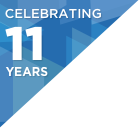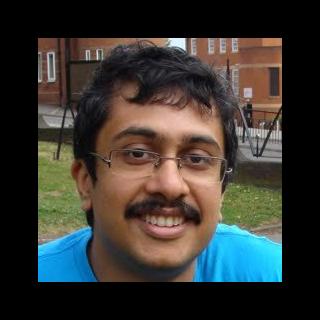Conference: Nov 5-7, 2018
Workshops: Nov 8–9, 2018
Presentation: Rethinking Applications for the NVM Era
Share this on:
What You’ll Learn
- Approaches to handling persistent objects in DRAM
- How to handle failure in memory as if you were using a file system.
Abstract
Storage looks and feels like a block device hidden behind layers of abstractions - system calls, pagecaches, block device drivers and things we don't want to think about. This might change in the near future with the introduction of CPU accessible, byte addressable, persistent memory. How would your logging service, database or filesystem look in this world? Actually, would you need any of those or could a persistent C++ STL container be your storage service of choice?
Interview
So the focus of this talk is about how do you re-architect your software to take advantage of the advances of software today. Many developers treats the serialization of objects as sort of a separate process something that hangs off the side where the object is out of flat file or disk. But now if your object lives in persistent memory how do you manage that? How do you update that in a consistent way so it's you know it's just constant even through power failures and so on. So most of the focus is on talking about how we write our software in the future when our DRAM is persistent.
Somebody who writes C++ could but might be curious about what non-volatile memory might mean for them. So for instance maybe somebody who is developing a boost library and wants to use non-volatile memory and also wants to know what NVM is doing under the hood.
So I'm going to sort of start by talking about general principles. C had sort of an object layout in memory and if the the memory was persistent, how would you manipulate that in a failure atomically? What does it means if I'm inserting a node of a red/black tree and now pull power in between, how do I ensure I haven’t destroyed the black tree. So this has been tackled in the file system and database world. But I'm talking about a general principle that we're tackling this with non-volatile memory and I'm sort of going to move on to saying in a practical sense if you’re writing code today, what are the libraries available to let you do this in a more high level maybe having to take up all those details yourself.
Well as I look a lot of the hardware software interface so a lot of the tech issues I deal with is really coming from two angles. One is because Moore's Law is slowing down so CPUs basically you can not take the same code and speed up by a factor of two every 18 months. At the same time software developers cannot expect code to be sped up until they start taking advantage of new features in the CPU; because that's the only way you can get things to go faster. So really a lot of the stuff that keeps me awake at night is bridging this.
Similar Talks


.
Tracks
-
Architectures You've Always Wondered About
Architectural practices from the world's most well-known properties, featuring startups, massive scale, evolving architectures, and software tools used by nearly all of us.
-
Going Serverless
Learn about the state of Serverless & how to successfully leverage it! Lessons learned in the track hit on security, scalability, IoT, and offer warnings to watch out for.
-
Microservices: Patterns and Practices
Stories of success and failure building modern Microservices, including event sourcing, reactive, decomposition, & more.
-
DevOps: You Build It, You Run It
Pushing DevOps beyond adoption into cultural change. Hear about designing resilience, managing alerting, CI/CD lessons, & security. Features lessons from open source, Linkedin, Netflix, Financial Times, & more.
-
The Art of Chaos Engineering
Failure is going to happen - Are you ready? Chaos engineering is an emerging discipline - What is the state of the art?
-
The Whole Engineer
Success as an engineer is more than writing code. Hear inward looking thoughts on inclusion, attitude, leadership, remote working, and not becoming the brilliant jerk.
-
Evolving Java
Java continues to evolve & change. Track covers Spring 5, async, Kotlin, serverless, the 6-month cadence plans, & AI/ML use cases.
-
Security: Attacking and Defending
Offense and defensive security evolution that application developers should know about including SGX Enclaves, effects of AI, software exploitation techniques, & crowd defense
-
The Practice & Frontiers of AI
Learn about machine learning in practice and on the horizon. Learn about ML at Quora, Uber's Michelangelo, ML workflow with Netflix Meson and topics on Bots, Conversational interfaces, automation, and deployment practices in the space.
-
21st Century Languages
Compile to Native, Microservices, Machine learning... tailor-made languages solving modern challenges, featuring use cases around Go, Rust, C#, and Elm.
-
Modern CS in the Real World
Applied trends in Computer Science that are likely to affect Software Engineers today. Topics include category theory, crypto, CRDT's, logic-based automated reasoning, and more.
-
Stream Processing In The Modern Age
Compelling applications of stream processing using Flink, Beam, Spark, Strymon & recent advances in the field, including Custom Windowing, Stateful Streaming, SQL over Streams.
-
Performance Mythbusting
Real world, applied performance proofs across stacks. Hear performance consideratiosn for .NET, Python, & Java. Learn performance use cases with OpenJ9, Instagram, and Netflix.
-
Tools and Culture: What's Beyond a Stack of Containers?
Containers are not just a techology. It's a platform. Push your knowledge.
-
Web as Platform
All things Browser, from JavaScript Frameworks for animation and AR / VR to Web Assembly and from protocol work to open standards evolution.
-
Beyond Being an Individual Contributor
Beyond being an individual contributor. Building and Evolving managers and tech leadership.
-
Building Great Engineering Cultures
Why engineering culture matters. Track features org scaling, memes as a culture tool, Ally skills, and panels on diversity / inclusion.
-
Hardware Frontiers: Changes Affecting Software Developers Today
Topics around: Quantum computing, NVM, SMR, GPU, custom hardware, self-driving cars, and mobile hardware.











